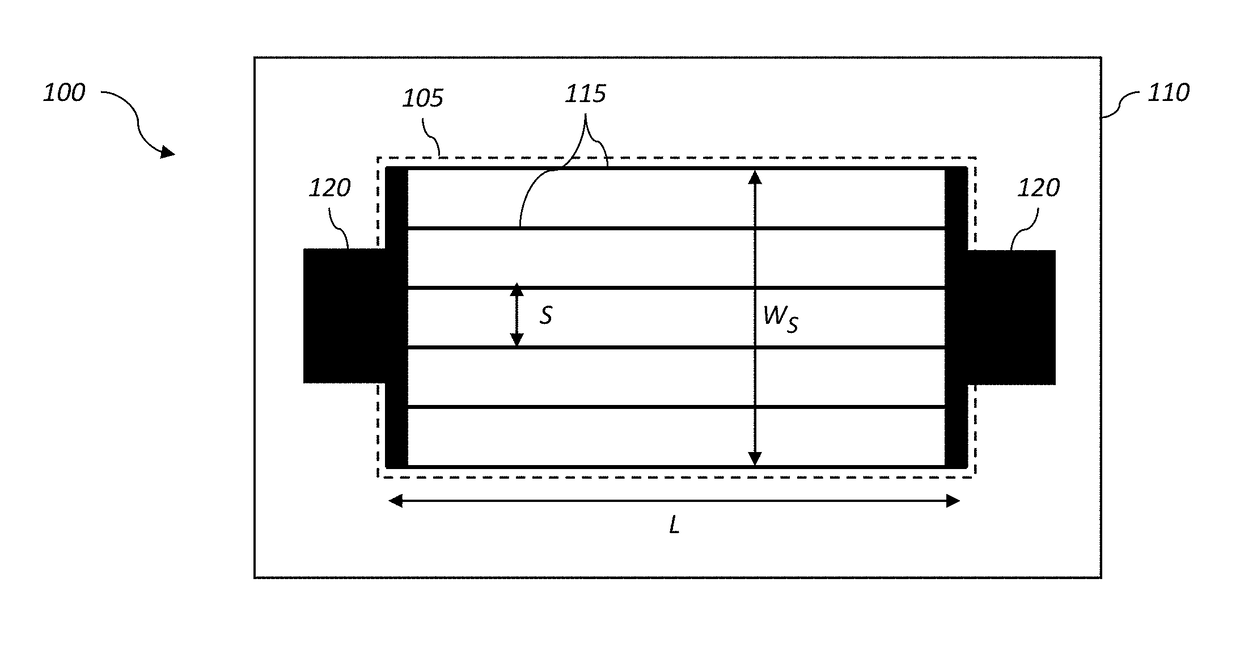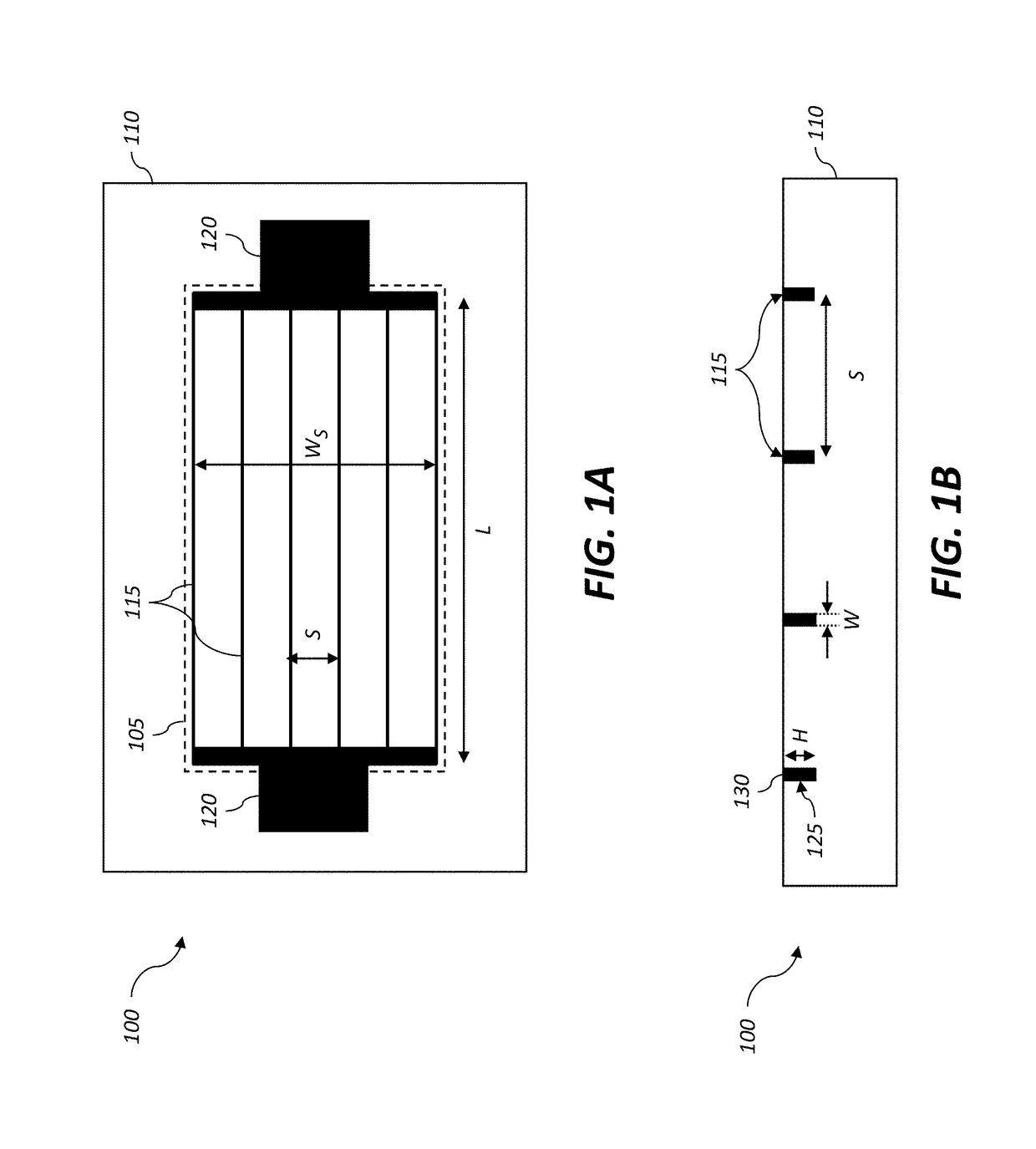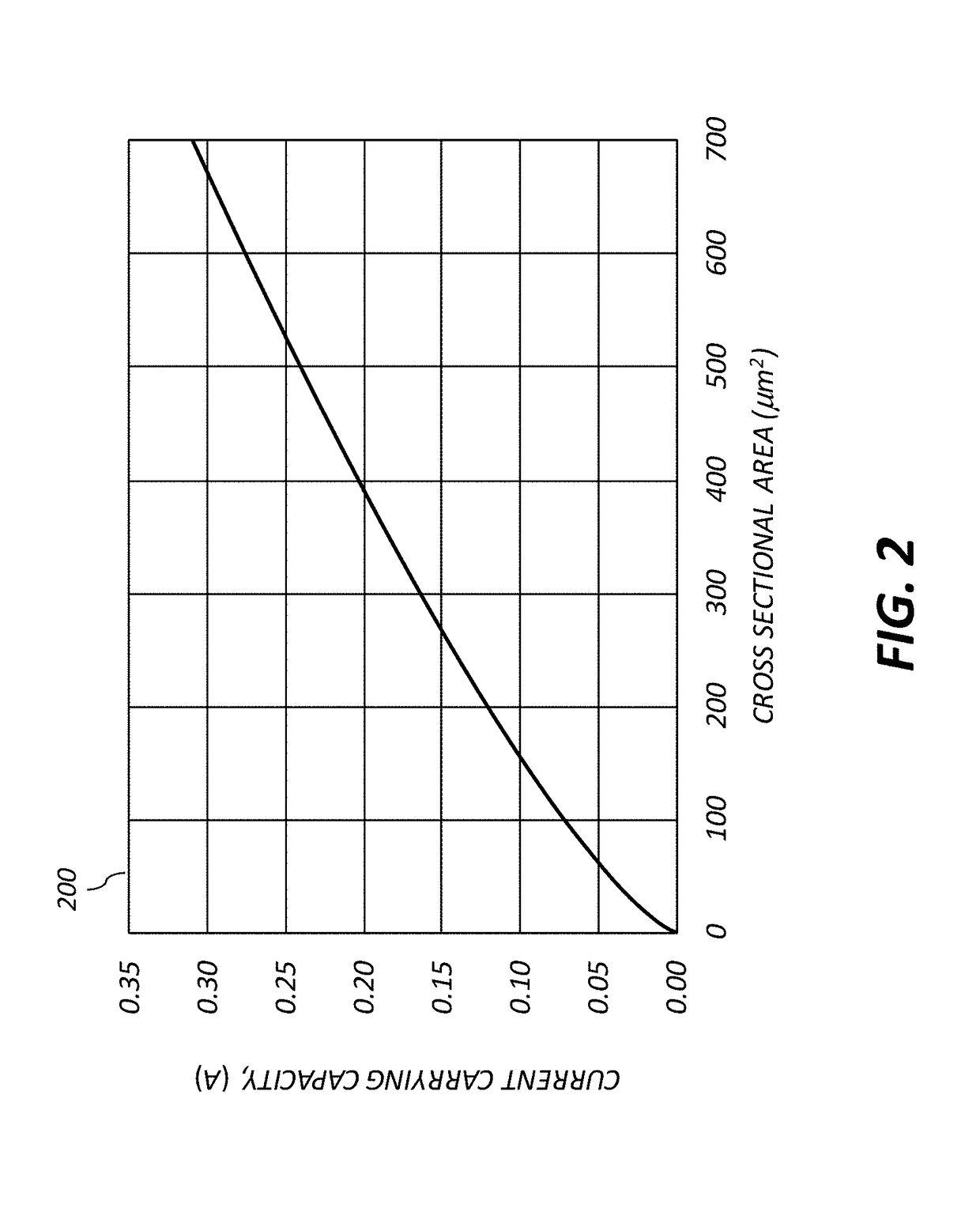Printed transparent heaters using embedded micro-wires
a technology of embedded micro-wires and heaters, applied in the field of heaters, can solve the problems of non-uniform power density, display may not function properly, and response can be very slow, and achieve excellent heating characteristics and higher power capacity
- Summary
- Abstract
- Description
- Claims
- Application Information
AI Technical Summary
Benefits of technology
Problems solved by technology
Method used
Image
Examples
example 1
Transparent and Flexible Heater Using PET Substrate
[0095]An exemplary transparent heater 100 was fabricated on a PET substrate 110 using the micro-wire pattern shown in FIG. 14. This exemplary heater was designed to provide a useful temperature range between room temperature and 120° C. The fabricated transparent heater 100 was sandwiched between two PDMS sheets (having a 2 mm thickness) during testing. The micro-wires 115 were configured to have a width of W=5 μm wide, a thickness of H=14 μm, and a total length of L=2.4 m, and were arranged in zig-zag shape (as in FIG. 9B). Four parallel micro-wires 115 were grouped together with an inter-wire spacing of S=250 μm.
[0096]Various measurement results are summarized in the first column of Table 2. The measured resistance is 476Ω at room temperature, corresponding to a single wire resistance of 1904Ω. The normalized resistance per unit length for one wire was calculated to be R / L=793 Ω / m. This is about 11% higher than the theoretical val...
example 2
High Temperature Transparent Heater Using Glass Substrate
[0098]Another exemplary transparent heater 100 was fabricated on a glass substrate using the micro-wire pattern shown in FIG. 14. This exemplary heater configuration was designed to provide a larger temperature range useful temperature range from room temperature up to 200° C. The performance was measured using a similar procedure and the results are summarized in the second column of Table 2. FIG. 15B shows a graph 310 plotting the resulting temperature as a function of the voltage and current supplied to the transparent heater. At the maximum voltage that was tested (60 V) a surface temperature of 205° C. was obtained.
TABLE 2Example 1Example 2SubstratePETGlassConductorSilver inkSilver inkWidth, W (μm)55Thickness, H (μm)1418Aspect ratio (H / W)2.83.6Length, L (m)2.42.05Resistance, R (Ω)1904 (1 wire)1252 (1 wire) 476 (4 wires) 313 (4 wires)Resistance / length (Ω / m)793611Max current tested (A)0.0210.032Max current density tested ...
PUM
 Login to View More
Login to View More Abstract
Description
Claims
Application Information
 Login to View More
Login to View More - R&D
- Intellectual Property
- Life Sciences
- Materials
- Tech Scout
- Unparalleled Data Quality
- Higher Quality Content
- 60% Fewer Hallucinations
Browse by: Latest US Patents, China's latest patents, Technical Efficacy Thesaurus, Application Domain, Technology Topic, Popular Technical Reports.
© 2025 PatSnap. All rights reserved.Legal|Privacy policy|Modern Slavery Act Transparency Statement|Sitemap|About US| Contact US: help@patsnap.com



